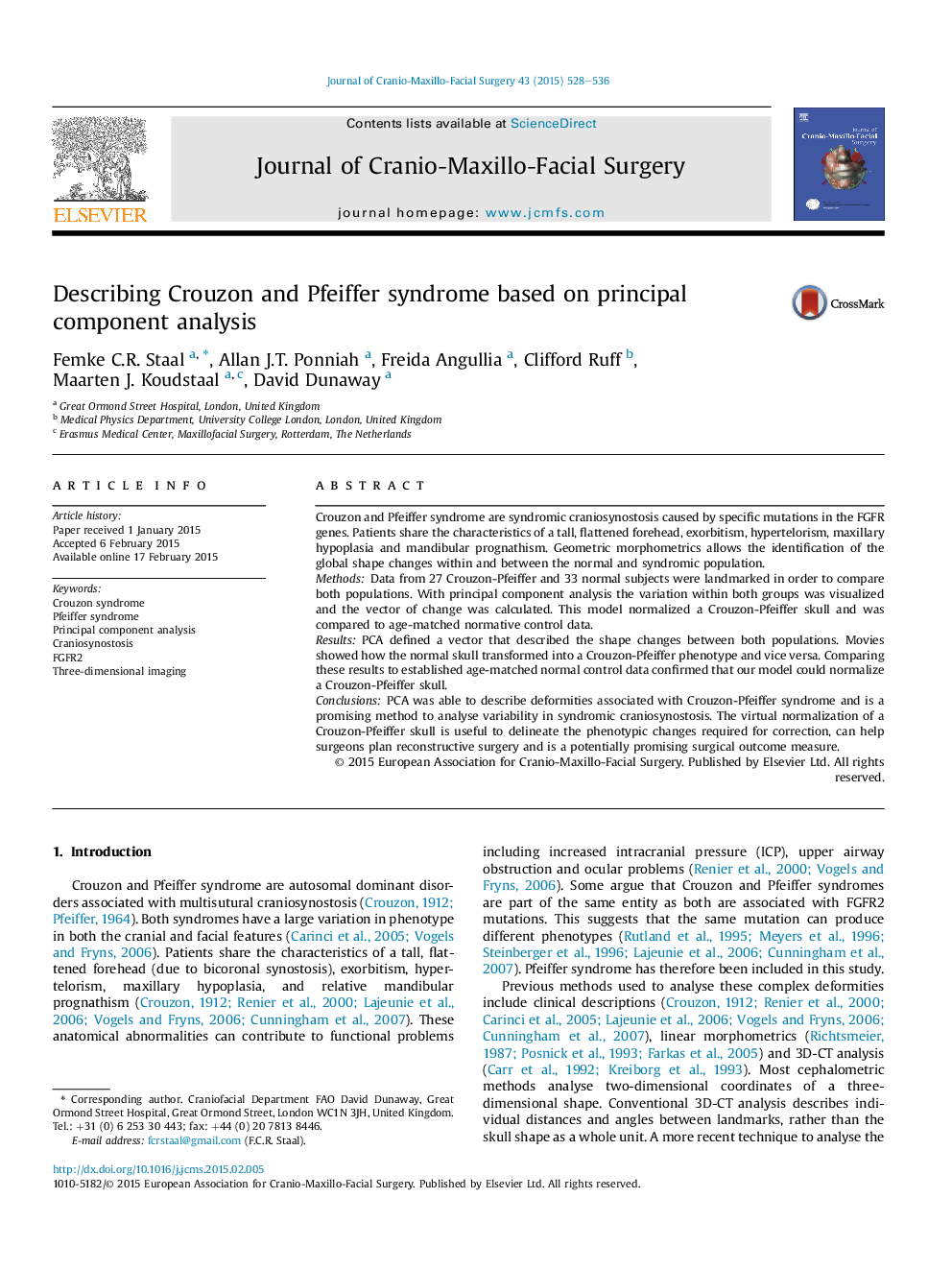| کد مقاله | کد نشریه | سال انتشار | مقاله انگلیسی | نسخه تمام متن |
|---|---|---|---|---|
| 3143189 | 1196808 | 2015 | 9 صفحه PDF | دانلود رایگان |

Crouzon and Pfeiffer syndrome are syndromic craniosynostosis caused by specific mutations in the FGFR genes. Patients share the characteristics of a tall, flattened forehead, exorbitism, hypertelorism, maxillary hypoplasia and mandibular prognathism. Geometric morphometrics allows the identification of the global shape changes within and between the normal and syndromic population.MethodsData from 27 Crouzon-Pfeiffer and 33 normal subjects were landmarked in order to compare both populations. With principal component analysis the variation within both groups was visualized and the vector of change was calculated. This model normalized a Crouzon-Pfeiffer skull and was compared to age-matched normative control data.ResultsPCA defined a vector that described the shape changes between both populations. Movies showed how the normal skull transformed into a Crouzon-Pfeiffer phenotype and vice versa. Comparing these results to established age-matched normal control data confirmed that our model could normalize a Crouzon-Pfeiffer skull.ConclusionsPCA was able to describe deformities associated with Crouzon-Pfeiffer syndrome and is a promising method to analyse variability in syndromic craniosynostosis. The virtual normalization of a Crouzon-Pfeiffer skull is useful to delineate the phenotypic changes required for correction, can help surgeons plan reconstructive surgery and is a potentially promising surgical outcome measure.
Journal: Journal of Cranio-Maxillofacial Surgery - Volume 43, Issue 4, May 2015, Pages 528–536